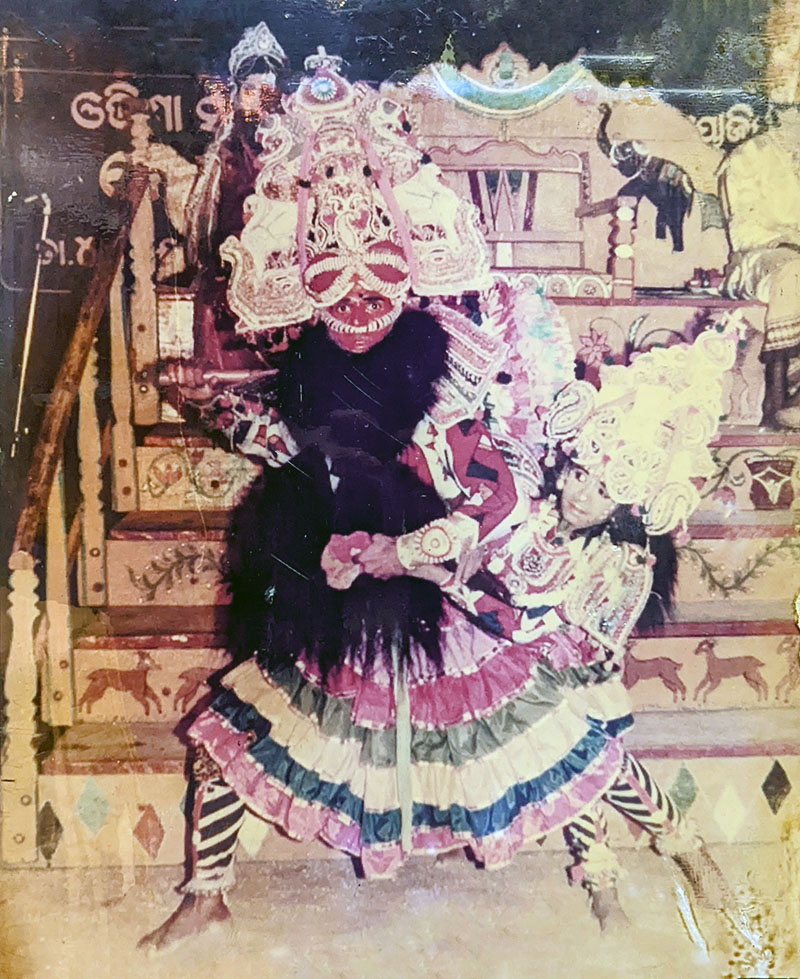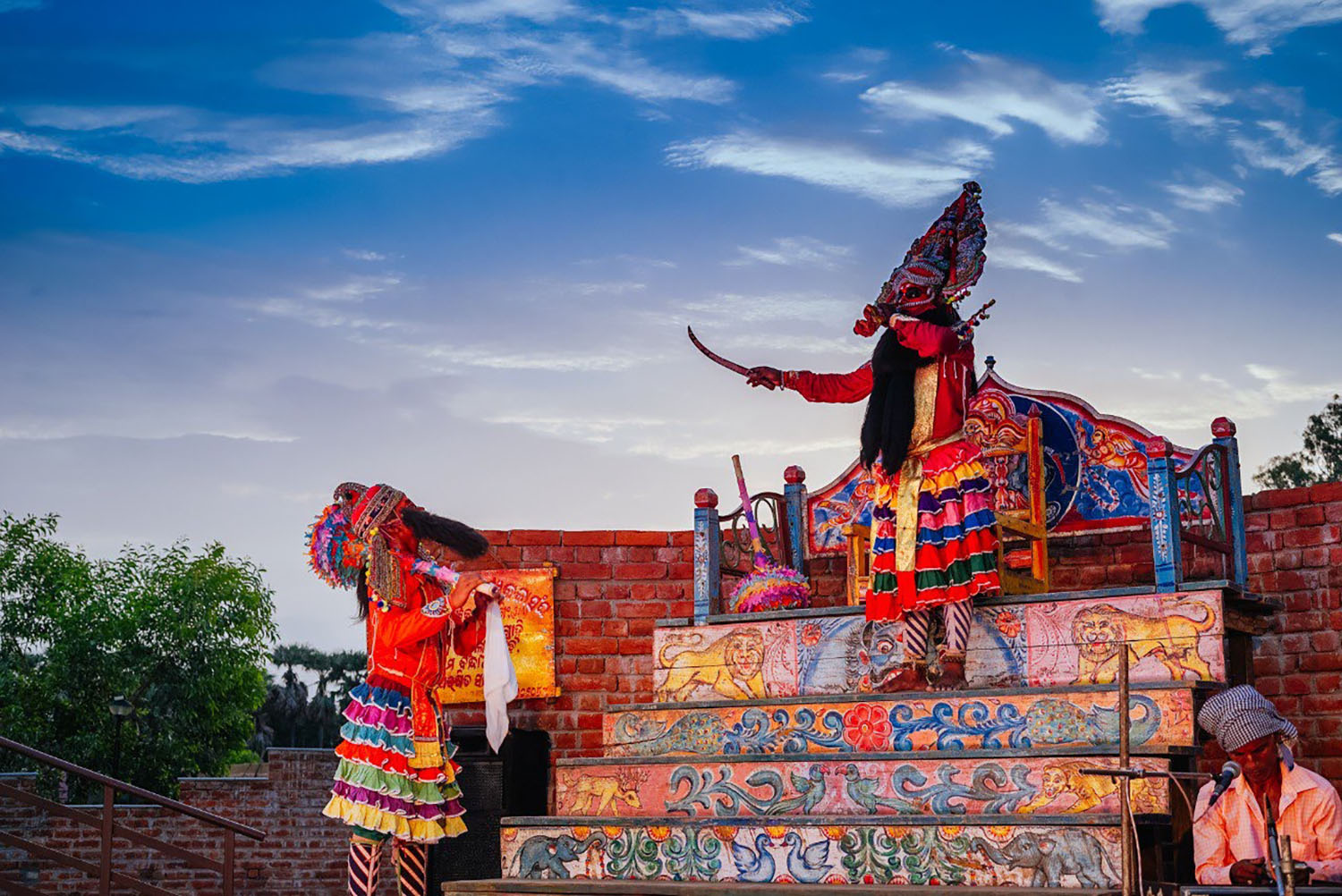ARTICLE
Prahlad Natak
The first written Prahlad Natak text was composed in the late nineteenth century by the poet and dramatist Gourahari Parichha using Sanskritised Odia. It was collected in 1938 and is housed in the Madras Oriental Manuscript Library. Parichha was patronised by the zamindar Ramakrishna Chhotaraya of Jalantar (in present-day Srikakulam district, Andhra Pradesh), who is credited with conceiving the first performance. Prahlad Nataks soon began to be conducted in neighbouring areas, following the same play but with some performative variations. This proliferation soon transformed Prahlad Natak into a theatrical genre based on a single play. The form lost royal patronage in the twentieth century and is today supported by rural audiences.
Prahlad Nataks are still performed in the Ganjam district of southern Odisha by some travelling troupes, but its popularity has declined significantly in recent years.
Bibliography
Our website is currently undergoing maintenance and re-design, due to which we have had to take down some of our bibliographies. While these will be re-published shortly, you can request references for specific articles by writing to hellomapacademy@map-india.org.








